该项目位于东京葛饰区的一个高密度街区,原先是一座老旧的公立幼儿园。在被转交给私人业主之后,幼儿园发起了新的设计竞赛,要求建筑师针对学校的历史和环境,以及当代社会的复杂需求来提交方案。Aisaka事务所的设计不仅满足了以上要求,还为学校引入了四个相互叠加的功能,以确保幼儿园能够在未来长期为社区提供令人满意的服务:它是一座“房子”,孩子们可以在一个令老师和家长都非常放心的安全环境中自由地玩耍;它是一个“公园”,可以帮助孩子们强身健体、启发心智;它是一所“学校”,教会孩子们感激生命与食物的价值;它也是一座“堡垒”,保护着孩子们远离附近可能发生的洪泛和其他风险。
This nursery school is located in a dense urban neighborhood in Tokyo’s Katsushika ward. A run-down public nursery school was being rebuilt and transferred to private ownership, and a competition was held to select an architect. We submitted a proposal in collaboration with a company applying to take over management. The competition required that the design take into consideration the school’s history and environment as well as the complex needs of contemporary society. Our winning proposal met these requirements while also containing four overlapping functions that ensure the facility will continue to be loved and used by the community for many years to come: it is a “house” where children can play freely in a setting their instructors and families know is safe; a “park” where all students can move their bodies and develop their minds; a “school” where they can learn to appreciate the value of life and food; and a “fort” to protect the community during flooding of the nearby raised-bed river and other disasters.
▼鸟瞰,Aerial view © Shigeo Ogawa
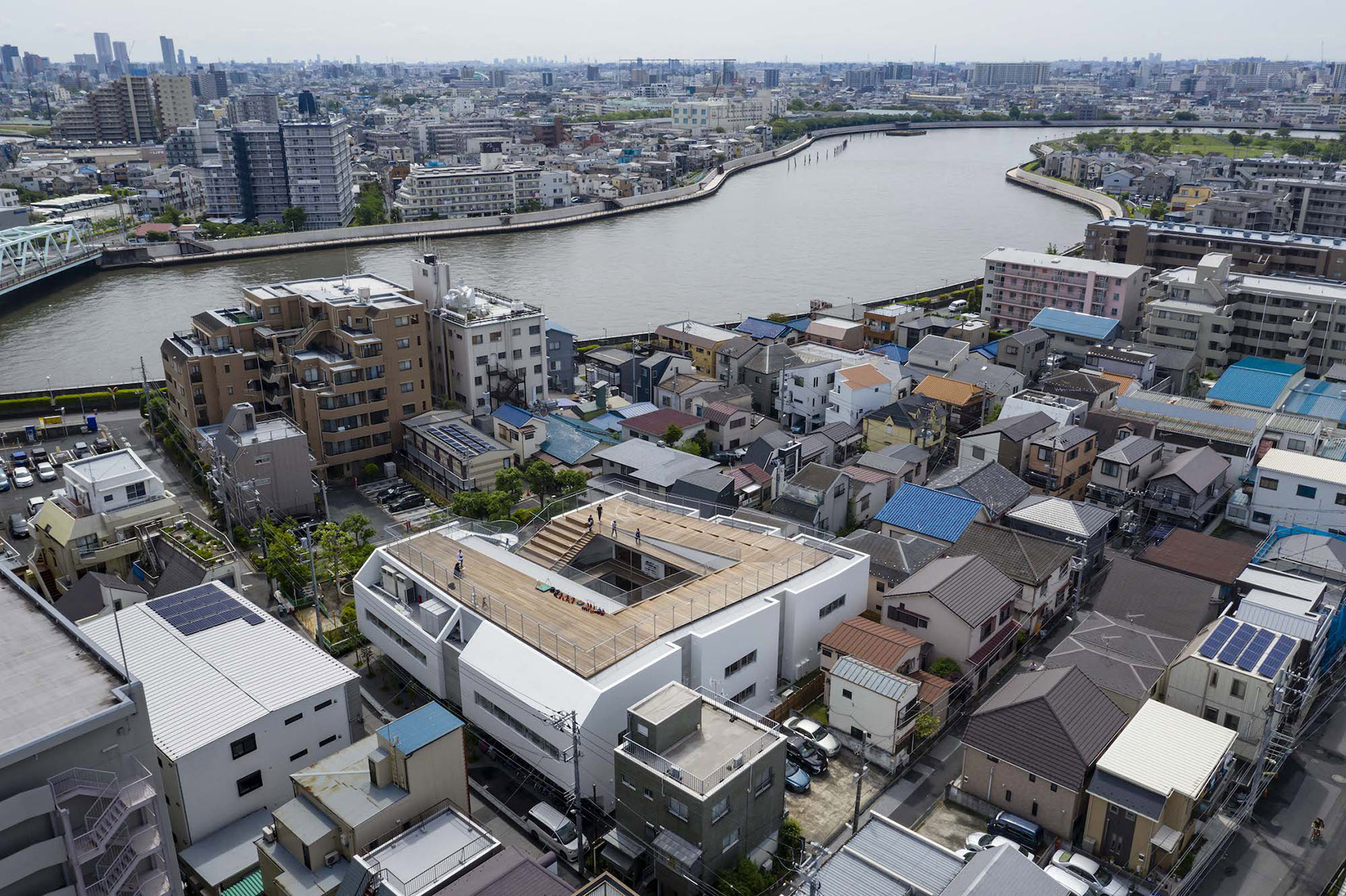
平坦的混凝土板和可经受水压的径向墙柱组成了建筑的钢筋混凝土结构。十米高的体量分为三层,大部分的教室位于二层,距离地面3.7米高,可以防止洪水侵袭。建筑外墙有三面是封闭的,在中间围合出一个庭院,主要是为了确保隐私性,同时阻挡来自密集住宅区的噪音。C形体量的“开口”朝向附近的公园。建筑立面被分为几个部分,与周围建筑的尺度相适宜。在建筑北侧,一层空间做了后退处理,拓宽了原本狭窄的街道,能够帮助减少自行车和汽车在交通高峰期发生拥堵和事故的风险。
The reinforced concrete structure is comprised of flat concrete slabs and radial wall pillars that can withstand water pressure. The ten-meter-high building has three floors, with most of the classrooms on the second floor, 3.7 meters above ground level, to withstand flooding. To ensure privacy and buffer noise in the dense residential neighborhood, as well as for ease of maintenance, the exterior of the building is closed off on three sides and surrounds a courtyard. The fourth side of the C-shaped building opens toward an adjacent park. The façade is divided into sections that match the scale of the surrounding buildings. On the north side, the first floor is set back from the narrow road that runs in front of the building, widening the street and thereby avoiding the risk of congestion and accidents during the morning and evening rush of bicycles and cars stopped for drop-off and pickup.
▼建筑外墙有三面是封闭的,在中间围合出一个庭院,The exterior of the building is closed off on three sides and surrounds a courtyard © Shigeo Ogawa
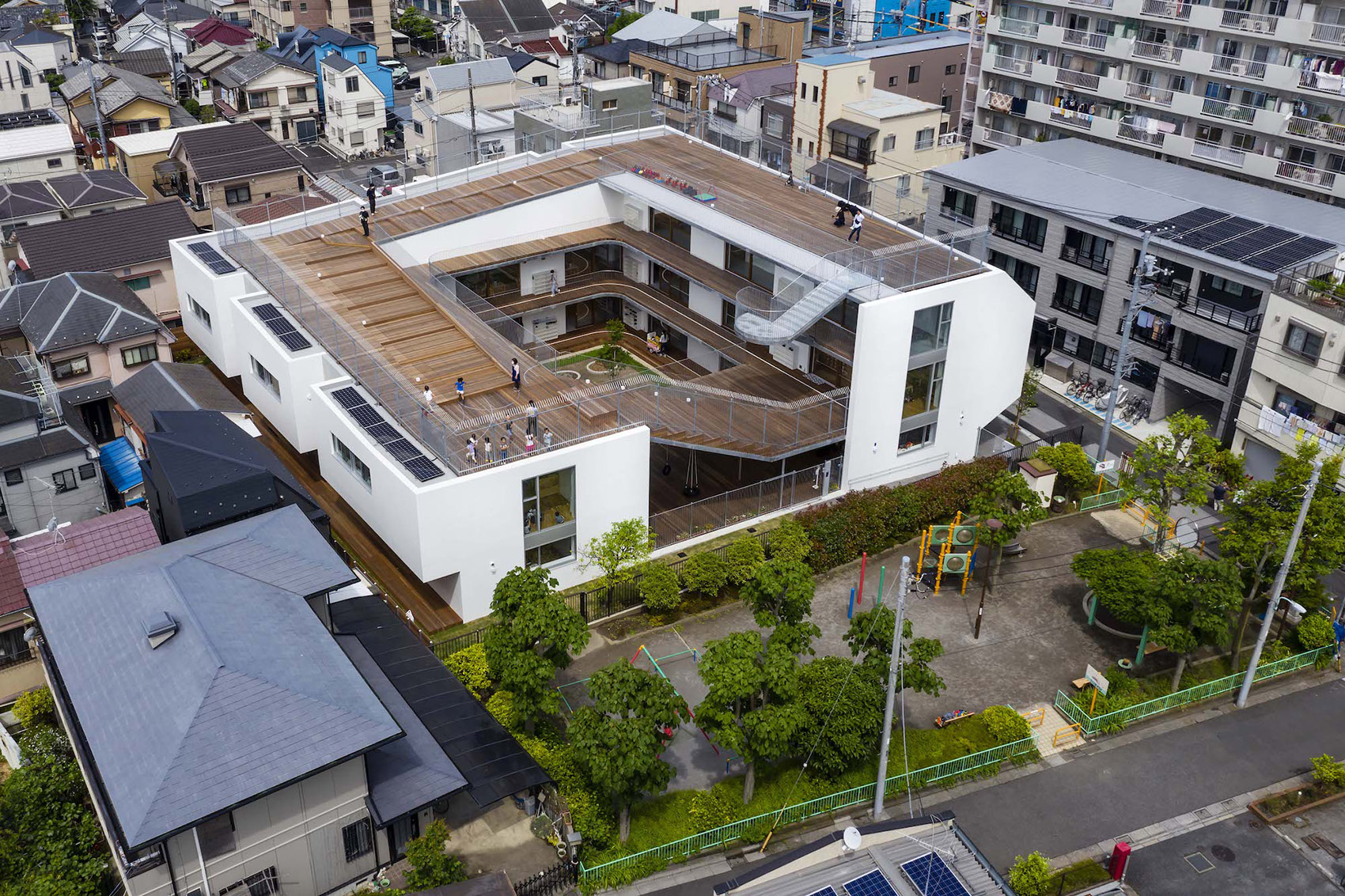
▼C形体量的“开口”朝向附近的公园,The fourth side of the C-shaped building opens toward an adjacent park © Shigeo Ogawa
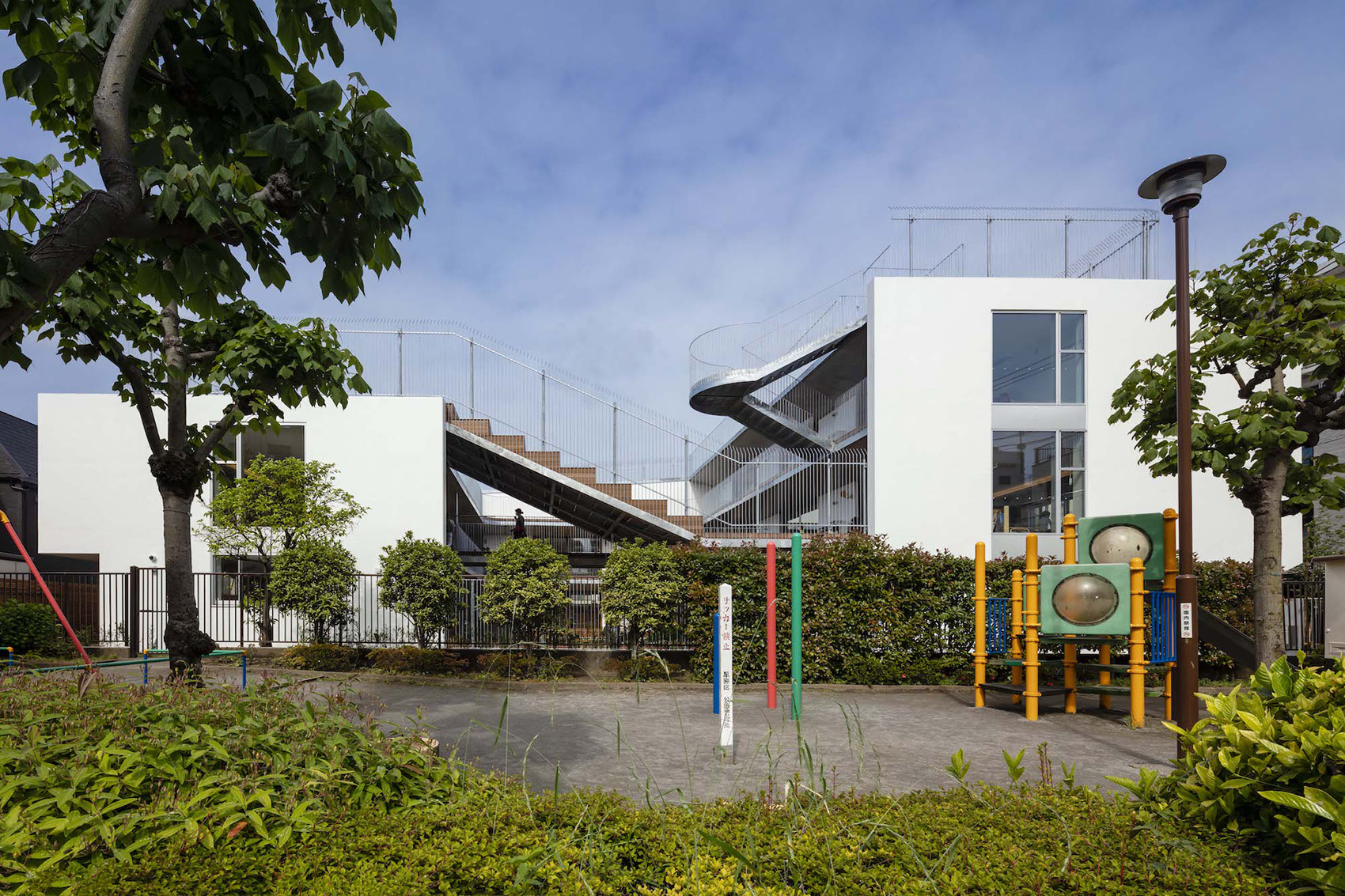
▼一层采取后退处理,起到拓宽街道的作用,The first floor is set back from the road to widen the street © Shigeo Ogawa
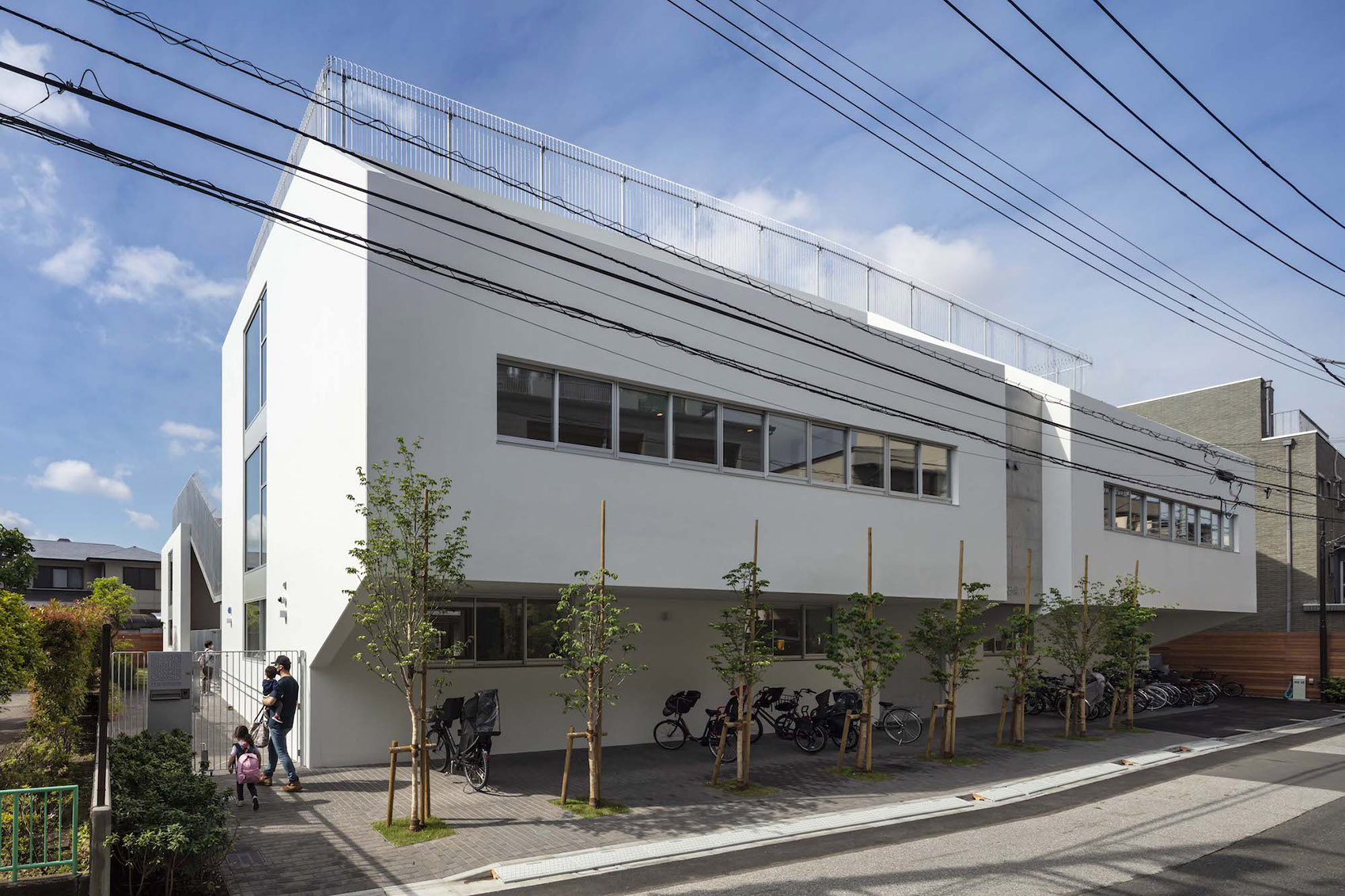
建筑中设置了多条交通路径,其中包括一些能够贯穿整个建筑的环路,可供孩子们平时在其中游戏。另外还有一部分在紧急情况下使用的垂直动线,发生火灾时便于下楼,水灾时便于上楼,确保了安全的疏散。特别地,延伸至屋顶的螺旋坡道和宽敞的楼梯不仅带来了应急储物空间,还让不同区域能够根据使用者的年龄调整天花板的高度。在二层,阶梯式的座椅在紧急情况下可容纳200-300人,足以让学校的165名学生、教职人员和社区成员安心地等待救援工作。
The design incorporates multiple circulation routes, including some that loop through the entire building to keep children engaged during ordinary playtime, and others for emergency use that move vertically, with people going down in fires and up in flood disasters to ensure safe evacuation. In particular, the spiraling ramp that extends all the way to the roof and the wide staircase create room for emergency storage space and ceiling heights adjusted according to age, while on the second floor, tiered seating can accommodate 200 to 300 people during emergencies, including the school’s 165 students as well as staff and community members waiting for help to arrive.
▼螺旋坡道一路延伸至屋顶,The spiraling ramp extends all the way to the roof © Shigeo Ogawa

▼庭院,Courtyard © Shigeo Ogawa
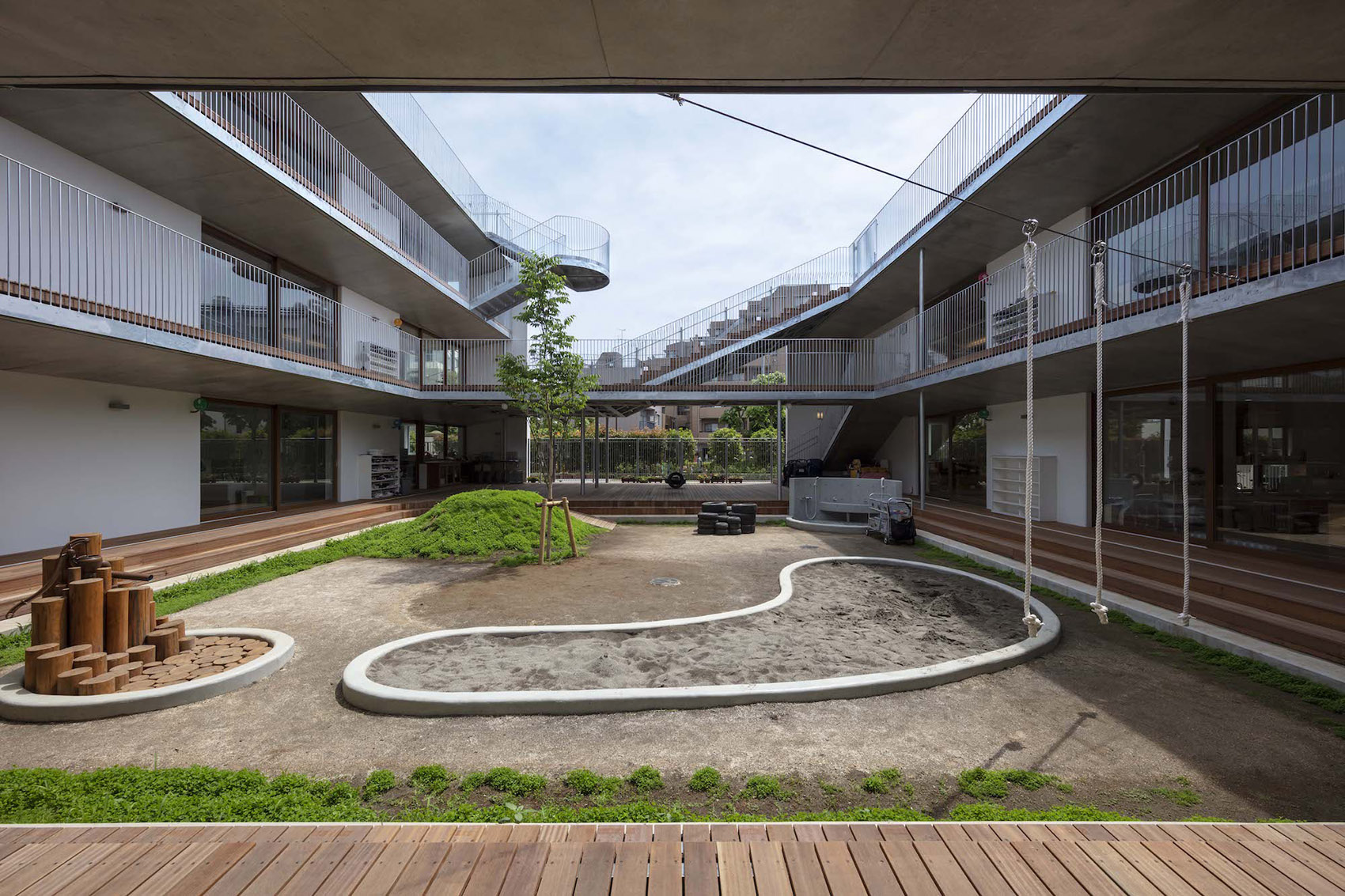
▼一层平台,Terrace on the first floor © Shigeo Ogawa

▼夜间鸟瞰,Aerial view by night © Shigeo Ogawa
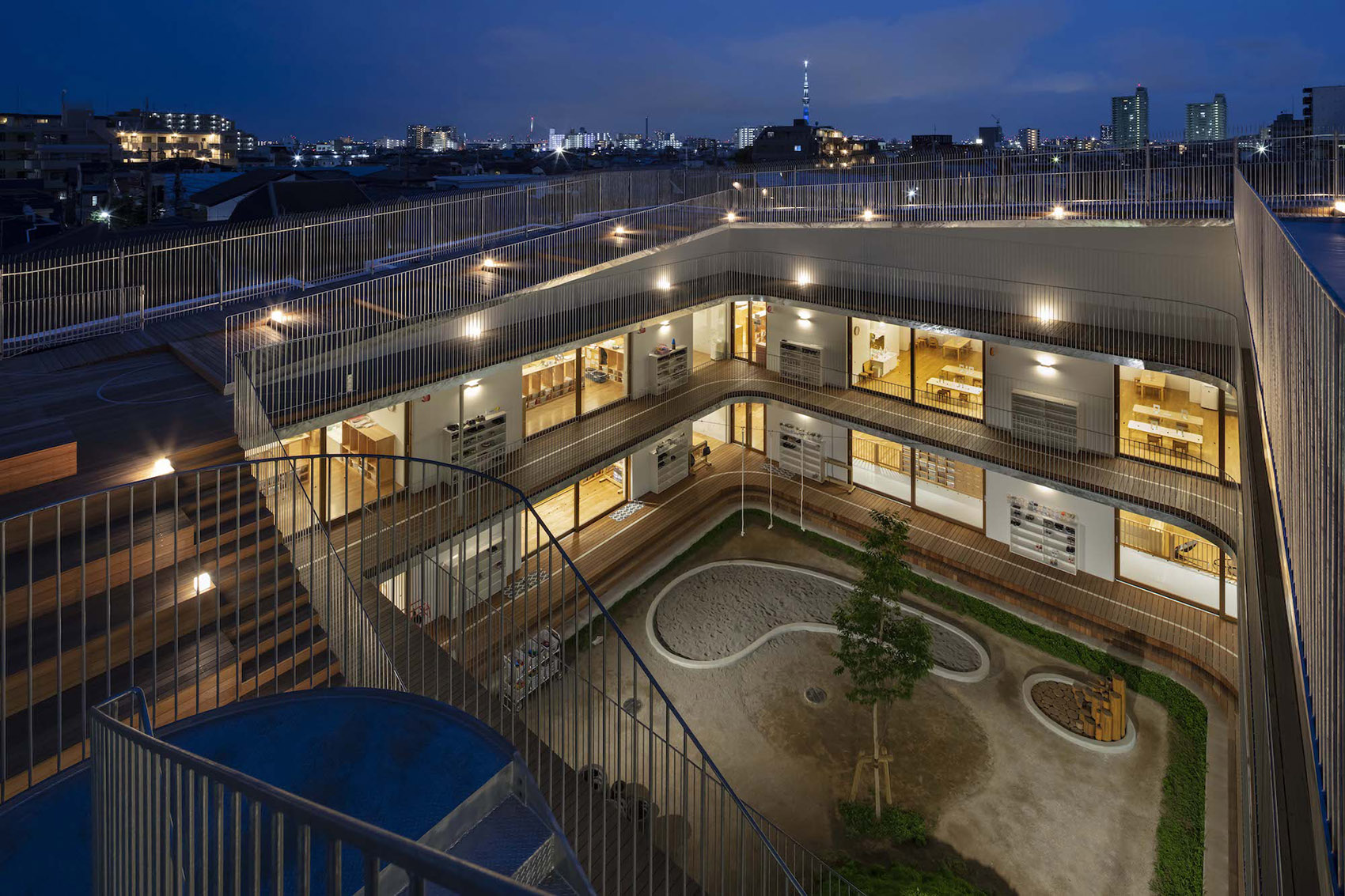
这是一座既能防灾,又能提供游乐场地的建筑;一座在向社区开放的同时又能对社区和街景保持尊重的建筑;一座让使用者几乎感觉不到角色变化的建筑。设计这样的建筑,有点像是在解决一个包含巨大变量的方程。设计团队致力于在设计的形式与色彩之间取得平衡:一方面确保建筑能够灵活地应对灾害和长期的社会变化,另一方面为幼儿园赋予一个适宜却又不过于幼稚的外观——总而言之,这是一座兼顾了品质与力量的设施。
Designing a building that is disaster-proof but also a fun place to play, open to the community via the adjacent park but also respectful of the neighborhood and streetscapes, and yet which does not making its users constantly aware it is performing these diverse roles felt a bit like solving a multivariate equation with enormous variables. In addition, we strived to achieve balance in the forms and colors of the design, flexibility to ensure the building can respond to disasters as well as long-term societal changes, and an appearance that is appropriate for a nursery school without being overly childish—that is, a facility that combines quality and strength.
▼室内空间,Interior view © Shigeo Ogawa
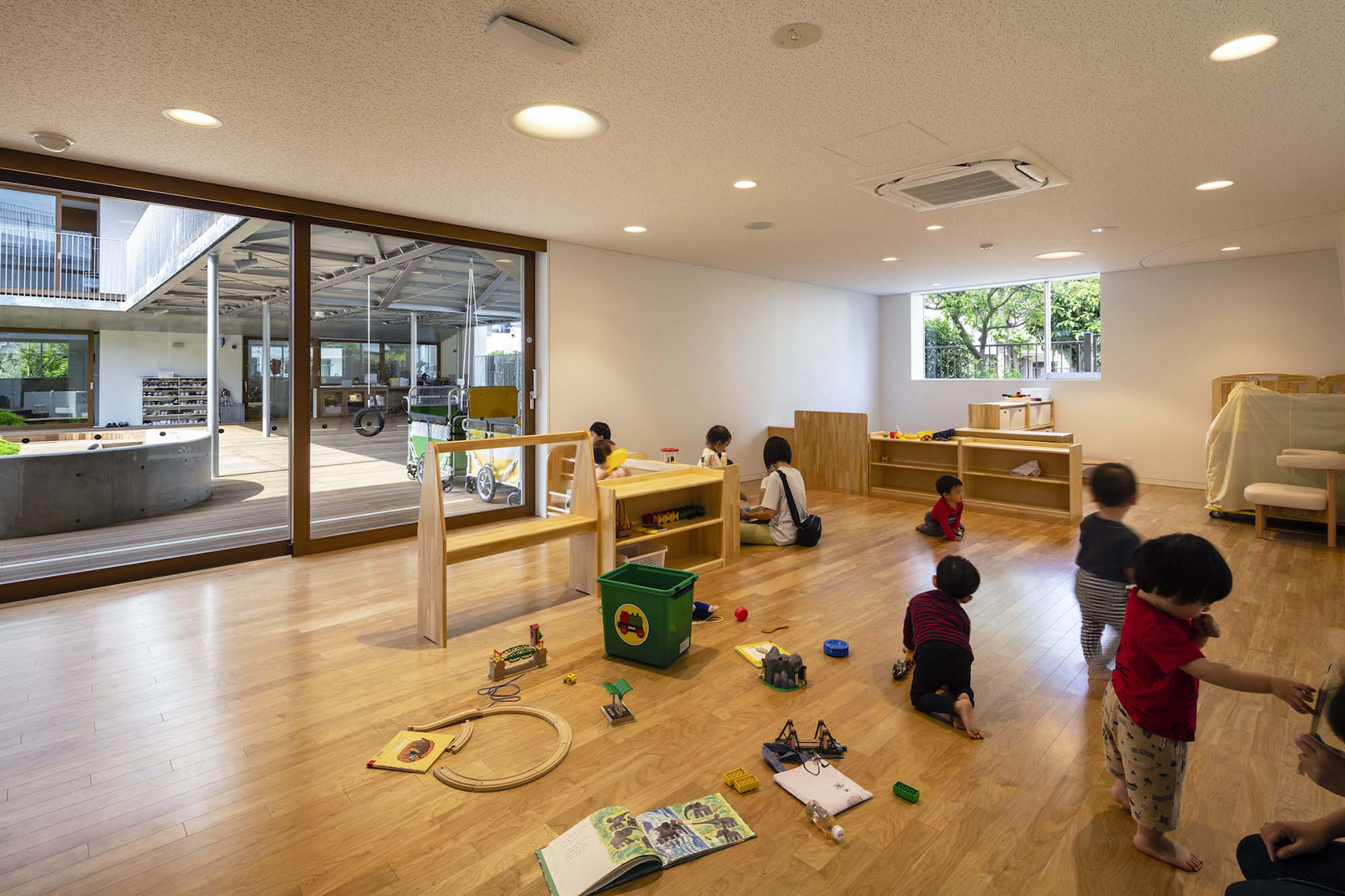
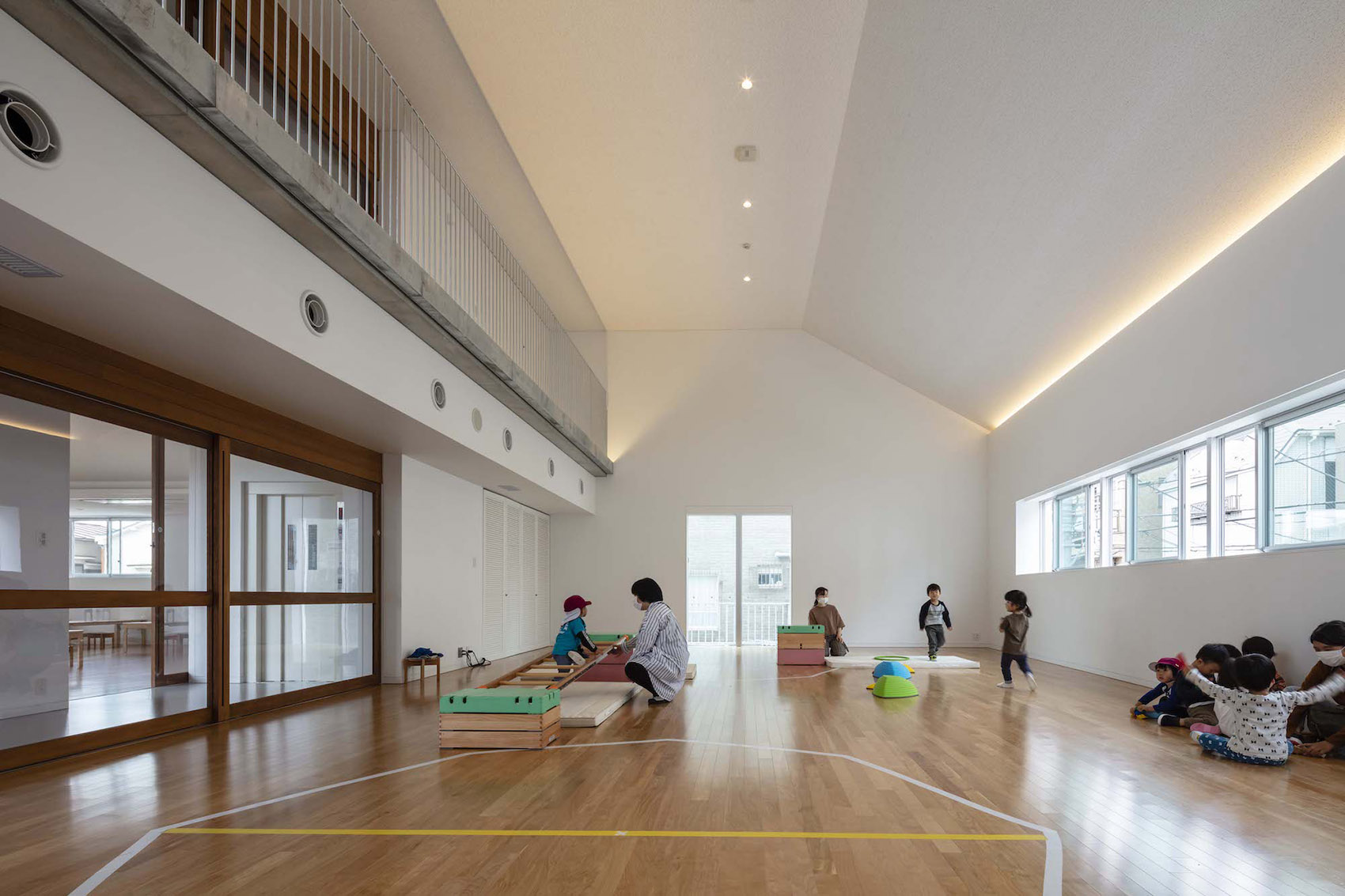
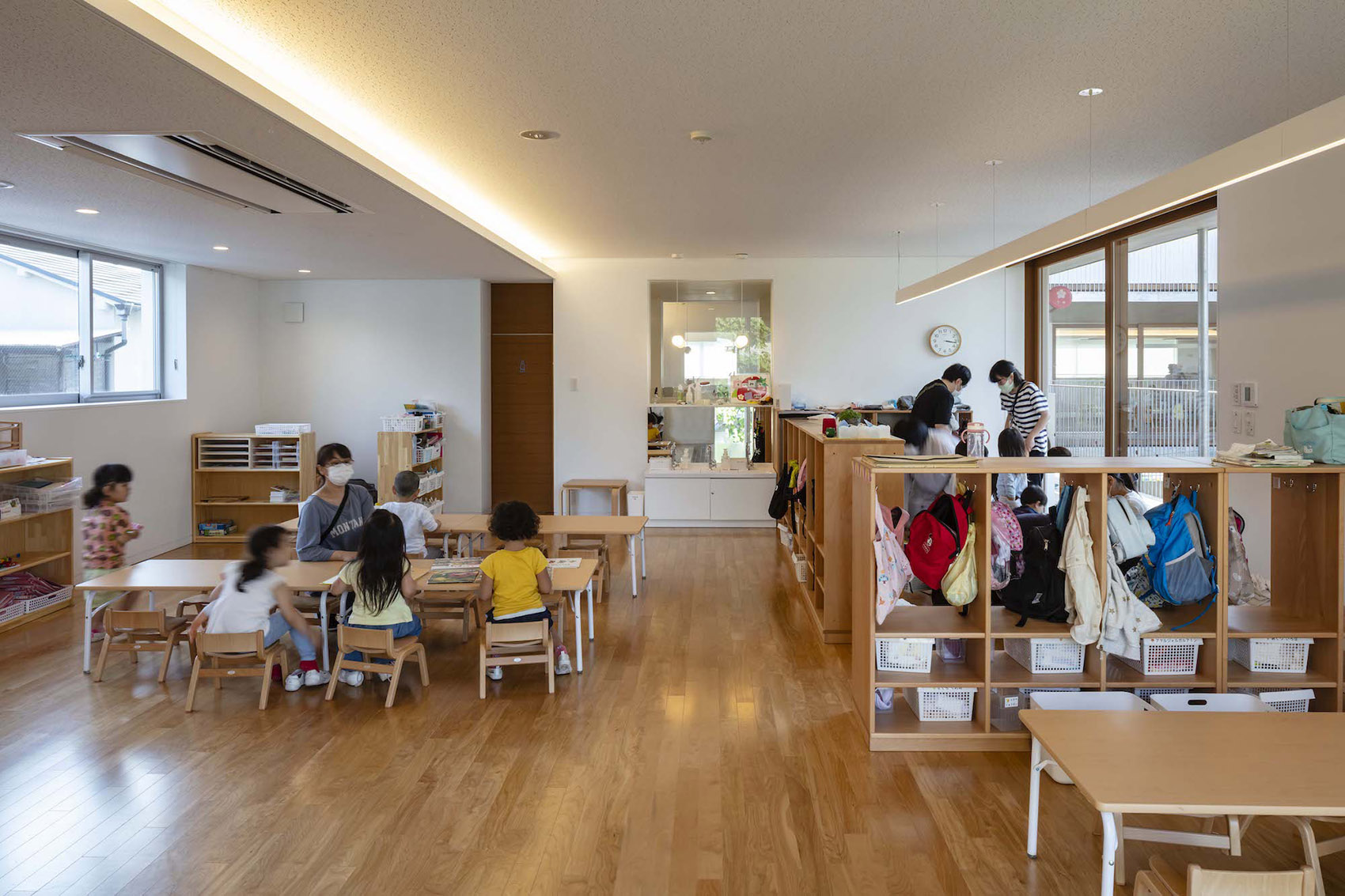
▼户外走廊,Outdoor path © Shigeo Ogawa

